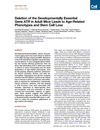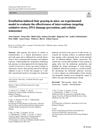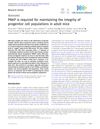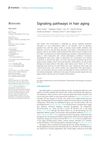Replicative Stress, Stem Cells, and Aging
March 2008
in “
Mechanisms of Ageing and Development
”
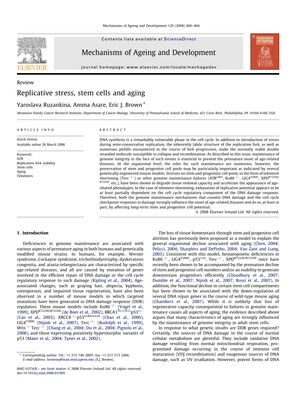
TLDR Maintaining DNA health in stem cells is key to preventing aging and tissue breakdown.
The 2008 review discussed the critical role of DNA damage response (DDR) in aging, particularly in the maintenance of stem and progenitor cell pools. It highlighted that deficiencies in genome maintenance can lead to premature aging and age-related diseases. The review emphasized the vulnerability of DNA synthesis during replication, where the replication fork can collapse, leading to tissue renewal capacity degradation and age-related phenotypes. It also noted the importance of telomere shortening and genome maintenance failures in stem and progenitor cell attrition. The review concluded that maintaining genome integrity in adult stem cells is crucial to prevent premature tissue degeneration. It discussed the role of checkpoint kinases like Rad53, ATR, and Chk1 in replication fork stability, with ATR deletion in mice leading to hair graying, alopecia, and osteoporosis due to reduced stem and progenitor cell pools. The document also explored the impact of the p53-p21 axis on stem cell loss and aging, with hyperactivation accelerating aging. Mice with hyperactivated p53 showed premature aging and reduced stem cell numbers, while those with additional p53 or reduced Mdm2 expression did not. Super-p53 mice, particularly with an extra Arf locus, had extended lifespans and protection against DNA damage and cancer. The study suggests that while excessive p53 activation can cause aging, enhanced DNA damage responses may suppress it. The clearance of senescent cells by the immune system may also affect age-related disease progression. The overall conclusion is that DNA replication stress leads to tissue degeneration with age, and stem cell regenerative capacity is impacted by the DNA damage response, with efficient clearance of damaged cells being important for tissue homeostasis and health.
